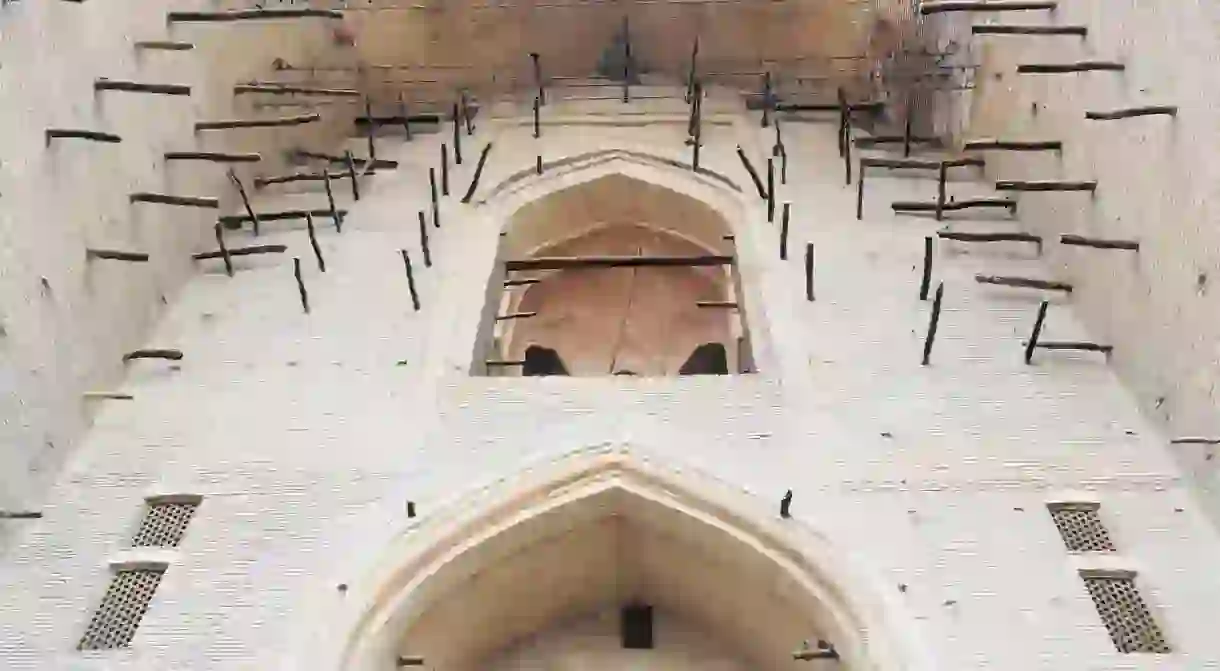How the Kazakh National Identity is Embodied in A Half-Finished Medieval Mausoleum

Discover the fascinating significance of this mysterious half-finished mausoleum, whose unrivaled craftsmanship and medieval uniqueness has come to embody the identity of a whole nation.
The Mausoleum of Khoja Ahmed Yasawi—a distinguished Sufi master of the 12th century—is a breathtaking monument located in the town of Yasi, now Turkestan, in southern Kazakhstan.
It was commissioned in 1389 by Timur, the ruler of Central Asia, in order to replace a smaller 12th-century mausoleum, and its epic structure has proudly reigned the Kazakh spirit ever since.

Our guide to the Mausoleum, Hodja Ahmet Yasawi, explains how the construction of the building was halted in 1405 following the death of Timur, and was never completed. You can still see the original half-finished wooden scaffolding poking through the exterior.

While you may wonder why someone else didn’t just finish what Timur had started, the fact that this famous monument is only half finished is actually what contributes to its legendary charm.

“No one knows what he wanted to do. It’s a mystery,” says Assel, our translator. “But our religion, past, and history starts with this monument,” she says, stressing its links to the Kazakh national identity.
This building, thought to be one of the greatest mausoleums of the Islamic world, is not only steeped in religious significance. It is also steeped in spiritual significance, revered for the notions of power and empire, craftsmanship, and uniqueness that are represented in its style and history. It embodies the very aspects of national identity that the Kazakhs are so proud of.

In terms of embodying Kazakh power and craftsmanship, its high structure remains one of the most impressive architectural achievements of Timur’s empire. It wrote a landmark chapter in the history of Central Asian architecture and its influence is unrivaled.

Not only do the vaulted constructions demonstrate the highest level of craftsmanship for its age, but its main dome remains the largest existing brick dome in Central Asia. The dome sits above the Main Hall (Kazandyk) at 18.2 meters in diameter.

While the mausoleum itself is simply constructed of fired brick, the walls leading from the entrance to the mausoleum are quirkily made from camel excrement, and somehow still stand completely intact from the 13th century.














